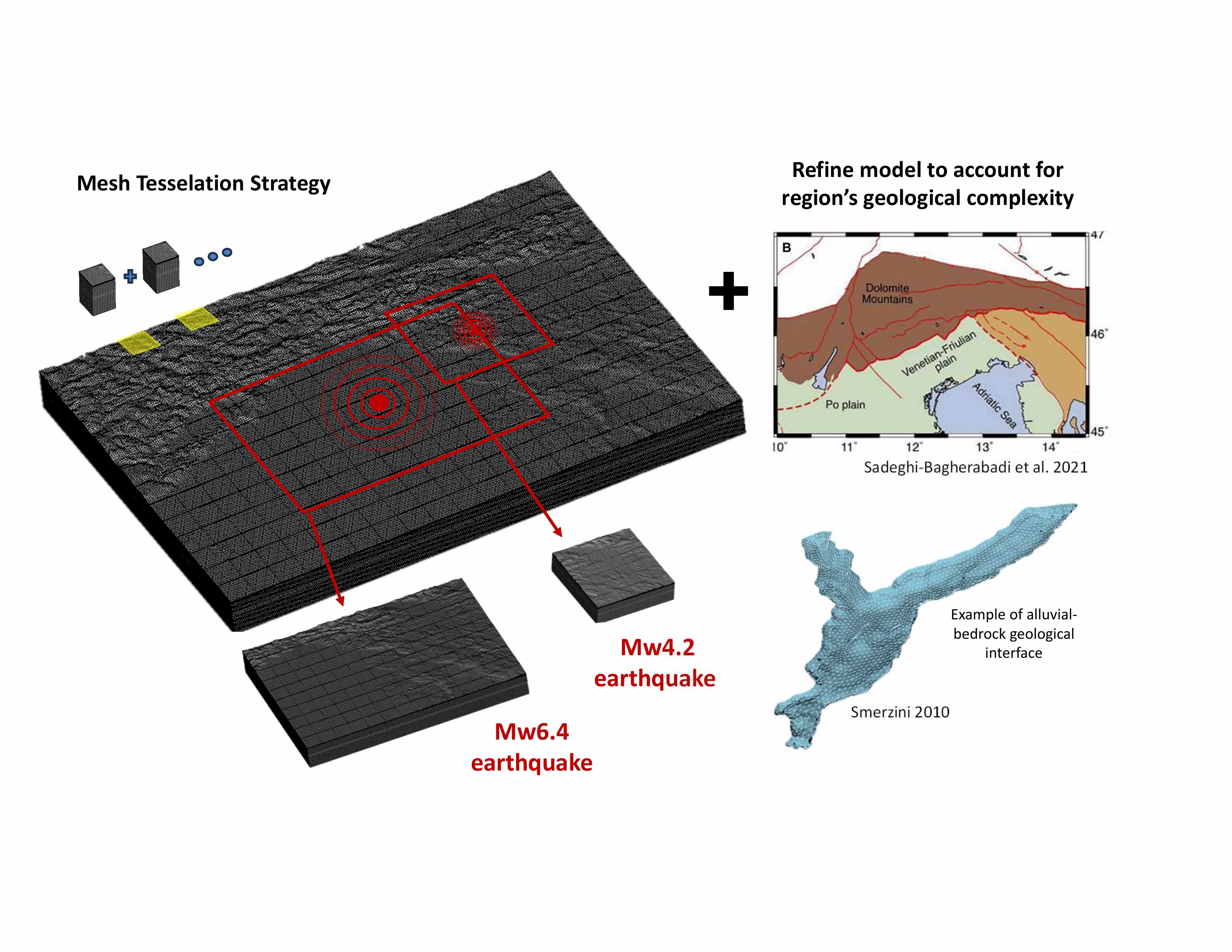Development of an urgent high-performance computing framework for the rapid physics-based simulation of earthquake impact at regional scale
Solid Earth Sciences, Seismology
Research area
Earthquakes account for nearly half of natural disaster fatalities since 1980 (Munich Re 2024), driving advancements in disaster management. In response, the National Institute of Oceanography and Applied Geophysics (OGS) developed UrgentShake (Zuccolo et al. 2025), a system for near real-time physics-based ground shaking simulations in the Friuli Venezia Giulia region. Integrated with the Rapid Damage Scenario Assessment (RDSA) framework (Poggi et al. 2021), it estimates earthquake-induced building damage using ground motion data, fragility models, and exposure data. UrgentShake leverages high-performance computing (HPC) from the TeRABIT Project and the Python-based tool RAPIDS (Zuccolo, 2024) to automate input generation for simulation codes like SPEED, which models seismic wave propagation in large 3D portions of the Earth’s crust.
Project goals
This project focuses on SPEED and its role within UrgentShake, with a key emphasis on developing and validating an efficient mesh tessellation strategy to streamline 3D model setup. By precomputing a region-wide mesh divided into validated subdomains, the strategy's workflow can dynamically select and merge relevant subdomains based on the earthquake’s epicenter and magnitude, significantly reducing setup time. Additionally, the regional velocity model will be refined to better capture geological and geotechnical variations, ensuring more accurate ground shaking simulations and subsequently more accurate damage estimation. In particular, improvements will focus on differentiating bedrock from alluvial layers, which play a critical role in seismic wave propagation. These enhancements will increase both accuracy and computational efficiency, contributing to a more robust and reliable framework for near real-time earthquake impact assessment.
Computational approach
The primary technological challenge lies in the development and implementation of the mesh tessellation strategy, ensuring that merging times improve its compatibility with urgent computing while maintaining the accuracy required for reliable damage scenarios. The process must efficiently handle dynamic subdomain selection based on earthquake parameters, minimizing computational overhead. Additionally, refining the model to better represent the complex geological and geotechnical conditions of the Friuli Venezia Giulia region will introduce greater mesh complexity and computational demands. A key challenge is to counterbalance the increased computational cost of these refinements without compromising simulation speed. Optimizing mesh generation, implementing parallel computing strategies, and leveraging high-performance computing (HPC) resources will be essential to ensure scalability and efficiency while maintaining the fidelity of ground shaking simulations.
Technological challenges of the project: implementation of mesh tessellation strategy and improvement of the regional velocity model, improving compatibility with urgent computing.
Ileana Elizabeth Monsalvo Franco
Polytechnic University of Milan
My name is Ileana Elizabeth Monsalvo Franco, and I am a PhD candidate at Politecnico di Milano. I earned my bachelor’s degree in civil engineering from UNAM (Universidad Nacional Autónoma de México), Mexico, graduating in 2019 with a thesis on the feasibility of a new seismic energy dissipation system for Mexico City. In 2021, I began my master’s studies at Politecnico di Milano, where I specialized in earthquake engineering, earning my master’s degree in civil engineering in 2023. My master’s thesis focused on the calibration of seismic fragility curves using physics-based simulations. In early 2024, I started my PhD at Politecnico di Milano, which is currently ongoing.










